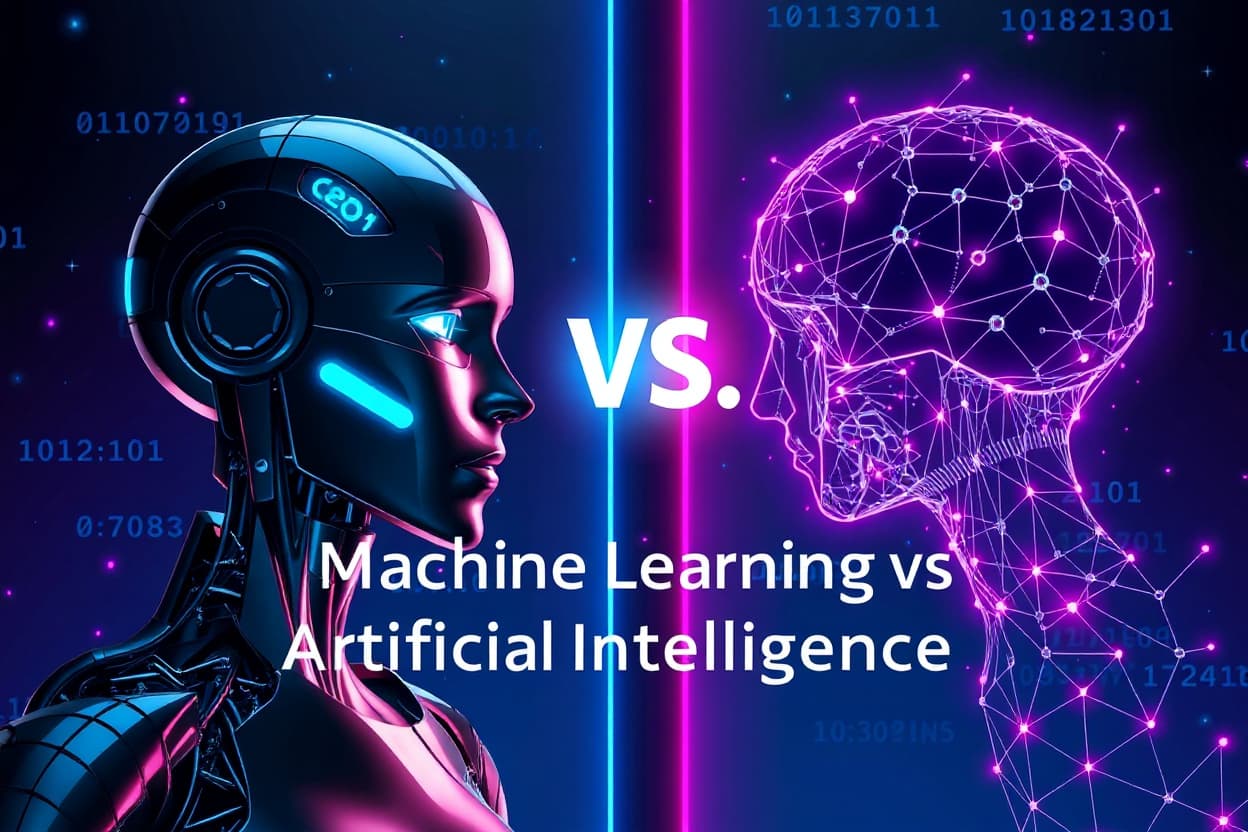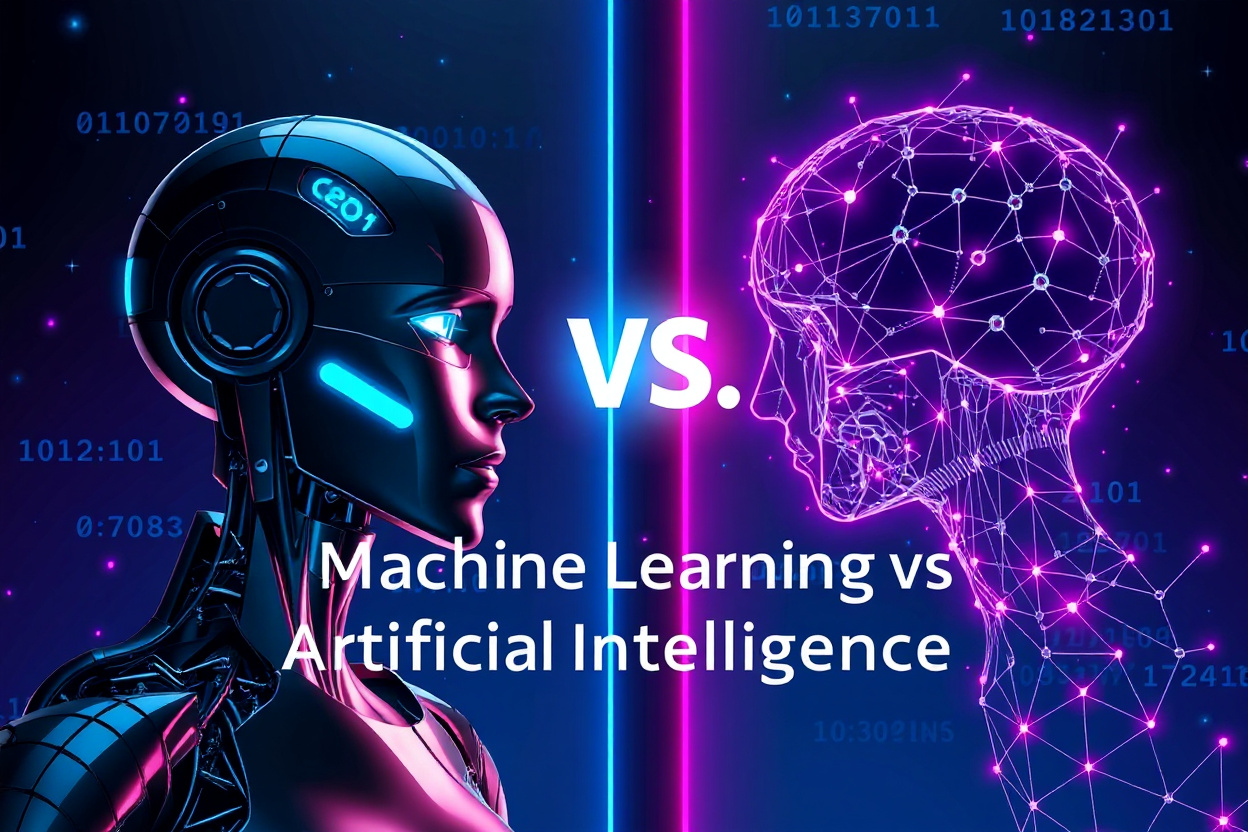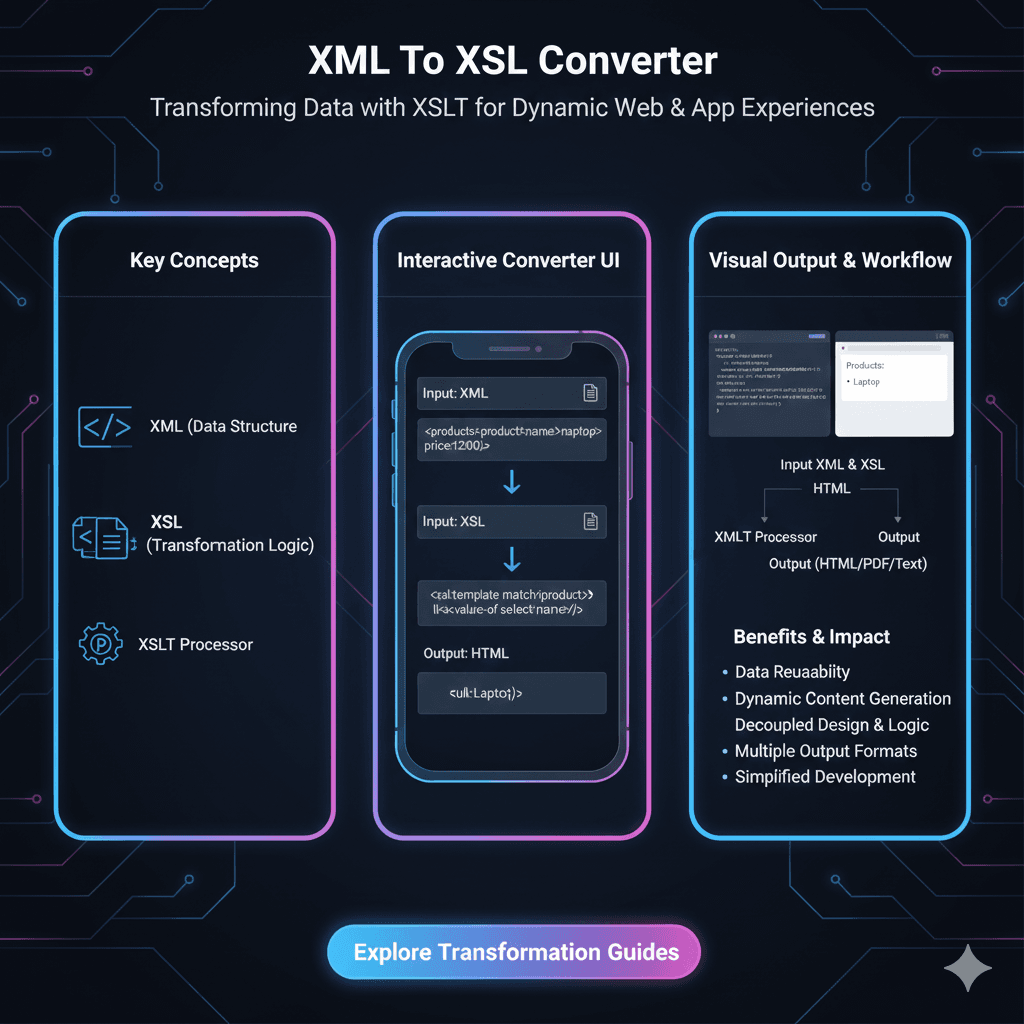AI vs. Machine Learning: What's the Real Difference?

Confused about AI and Machine Learning? This in-depth guide breaks down the differences with simple examples, real-world use cases, and clear explanations. Start your tech journey with Coder Crafter's expert courses!

AI vs. Machine Learning: What's the Real Difference?
AI vs. Machine Learning: Untangling the Hype and Understanding the Future
You’ve heard the terms a thousand times: Artificial Intelligence and Machine Learning. They’re splashed across news headlines, used in every tech product description, and have become the buzzwords du jour in everything from your smartphone to your smart fridge.
But here’s a secret: most people use them interchangeably, and in doing so, they miss the fascinating, nuanced relationship between the two.
If you’ve ever nodded along in a conversation about AI while a tiny voice in your head wondered, "But what is it, really?"—this article is for you. We're not just going to define these terms; we're going to unpack them, explore how they work in the real world, and clear up the confusion once and for all.
Think of it this way: All Machine Learning is Artificial Intelligence, but not all Artificial Intelligence is Machine Learning.
Still with me? Great. Let's dive in.
What is Artificial Intelligence? The Grand Vision
At its heart, Artificial Intelligence (AI) is a vast and ambitious field of computer science dedicated to creating machines or software that can perform tasks that typically require human intelligence. The ultimate, "holy grail" goal of AI is to build a system that can reason, learn, plan, perceive, and manipulate its environment in a way that is indistinguishable from—or even superior to—a human. This is often referred to as Artificial General Intelligence (AGI), the kind you see in movies, but we're not there yet.
The AI we interact with today is known as Narrow AI or Weak AI. These are systems designed to excel at one specific task.
Key Characteristics of AI:
Problem-Solving: Finding solutions to complex puzzles or logical problems.
Knowledge Representation: Storing information about the world and being able to use it.
Planning: Deciding on a sequence of actions to achieve a goal.
Learning: The ability to acquire and process new information.
Perception: Interpreting sensory data from the world (sight, sound, etc.).
Natural Language Processing (NLP): Understanding and generating human language.
Classic Examples of AI (that aren't necessarily ML)
To understand AI without the ML lens, consider these:
A Chess-Playing Computer (like Deep Blue): In 1997, IBM's Deep Blue beat world champion Garry Kasparov. It was a monumental AI achievement. But how did it work? Through brute force. It evaluated millions of possible moves per second based on a set of predefined, hard-coded rules. It wasn't "learning" from its mistakes in a meaningful way; it was calculating. This is Rule-Based AI.
A Simple Chatbot from the 90s (like ELIZA): These early chatbots used pattern matching and substitution methodology to simulate conversation. They had a scripted set of responses and didn't genuinely understand the user's intent.
Your Car's GPS Navigation System: When it calculates the fastest route from point A to point B, it's using complex algorithms for pathfinding and problem-solving—a core discipline of AI.
AI is the big, overarching dream of creating intelligent machines. It's the entire, vast ocean.
What is Machine Learning? The Engine of Modern AI
If AI is the dream of creating an intelligent brain, then Machine Learning (ML) is one of the most powerful and practical approaches to building a key part of that brain: the ability to learn from experience.
Instead of being explicitly programmed for every single scenario (like the chess computer), an ML model is trained using large amounts of data. You show it thousands of examples, and it figures out the patterns and rules for itself.
The core philosophy is simple: Let the data do the talking.
Key Characteristics of Machine Learning:
Data-Dependent: ML models are hungry for data. The more high-quality data you feed them, the better they perform.
Pattern Recognition: Their primary strength is identifying complex, hidden patterns within data that would be impossible for a human to code manually.
Adaptive: As new data arrives, ML models can be retrained to adapt and improve their performance over time.
Statistical Foundation: ML is deeply rooted in statistics and probability, making predictions based on what it has learned from the training data.
How Machine Learning Actually Works: A Simple Analogy
Imagine you want to teach a child what a "cat" is.
You don't give them a 100-page rulebook: "A cat has whiskers, pointy ears, fur, four legs, and a tail." Instead, you point at different animals and say, "That's a cat," "That's a dog," "That's a cat."
After seeing enough examples, the child's brain builds a mental model of "cat-ness." They can then see a new animal they've never encountered before and correctly identify it as a cat, even if it's a hairless Sphynx cat that breaks many of the "rules."
This is exactly how Machine Learning works.
Data Collection: You gather a massive dataset of images, some labeled "cat" and some labeled "dog."
Model Training: You feed this data to an ML algorithm. The algorithm makes guesses, is told when it's wrong, and adjusts its internal parameters millions of times to minimize errors.
Model Evaluation: You test the trained model on a set of images it has never seen before to see how well it performs.
Prediction/Inference: The model is now deployed. You give it a new, unlabeled picture, and it outputs "cat" or "dog" based on what it learned.
Real-World Examples of Machine Learning
Netflix & Spotify Recommendations: The models analyze your watching/listening history (and the history of millions like you) to find patterns and suggest what you might like next. They aren't programmed with rules like "if user watched Stranger Things, suggest sci-fi." They discover that complex pattern on their own.
Email Spam Filters: They learn from millions of emails marked as "spam" and "not spam" to identify the subtle characteristics of a spam email, constantly evolving as spammers change their tactics.
Credit Scoring: Banks use ML to analyze your transaction history, loan application data, and other factors to predict your creditworthiness more accurately than a simple rule-based system could.
Voice Assistants (Siri, Alexa): The speech-to-text engine is a classic ML model trained on countless hours of human speech to convert your spoken words into text.
Machine Learning, therefore, is a specific subset of AI. It's a methodology, a toolset, for achieving the broader goals of AI. It's the most potent and popular vessel currently sailing across the AI ocean.
The Relationship, Visualized and Explained
The best way to understand the hierarchy is through a visual metaphor.
Artificial Intelligence (AI) is the entire, big circle. It's the grand goal of creating intelligent machines.
Machine Learning (ML) is a major subset within that circle. It's a primary approach to achieving intelligence through learning from data.
Deep Learning (DL) is a further subset of Machine Learning. It uses complex "neural networks" with many layers (hence "deep") to solve even more complex problems, like image and speech recognition. Think of it as a more advanced, powerful engine for ML.
Generative AI is a cutting-edge field, often built on Deep Learning, that focuses on creating new content (like ChatGPT generating text or DALL-E creating images).
So, the hierarchy is: AI > ML > DL > Generative AI.
Real-World Use Cases: Seeing AI and ML in Action
Let's move from theory to practice. How are these technologies transforming industries today?
Use Case 1: Healthcare
AI (Rule-Based): An expert system that helps diagnose a disease based on a predefined flowchart of symptoms input by a doctor.
ML in Action: Analyzing medical images (X-rays, MRIs) to detect early signs of cancer with a level of accuracy that can surpass human radiologists. The model has been trained on hundreds of thousands of labeled images to find patterns invisible to the naked eye.
Use Case 2: Finance
AI (Rule-Based): Automatically flagging a transaction that exceeds a certain amount for fraud review.
ML in Action: Real-time fraud detection by analyzing your spending patterns—location, time, merchant type, amount—and flagging a transaction that deviates from your "normal" behavior, even if the amount is small.
Use Case 3: E-commerce & Retail
AI (NLP): A chatbot that can understand basic customer queries like "Where is my order?" by parsing the language.
ML in Action: The powerful recommendation engine that drives "Customers who bought this also bought..." and personalized homepage displays, significantly increasing sales and customer engagement.
Use Case 4: Autonomous Vehicles
This is a perfect example of AI and ML working in concert. The car's overall mission—navigate from A to B safely—is the AI goal. It uses:
ML (Computer Vision): To identify pedestrians, other cars, and traffic signs.
ML (Sensor Fusion): To combine data from cameras, LiDAR, and radar.
AI (Planning): To make a high-level decision like "change lanes" or "slow down for the upcoming curve."
Best Practices for Implementing AI and ML
Jumping on the AI/ML bandwagon without a strategy is a recipe for failure. Here’s how to do it right:
Start with the Problem, Not the Technology: Don't ask "How can we use ML?" Ask "What is our biggest business problem, and could ML be a part of the solution?" The goal is value, not novelty.
Data is King, but Quality is Emperor: You cannot build a good ML model with bad data. The first and most crucial step is ensuring you have a large, clean, and well-labeled dataset. Garbage in, garbage out.
Choose the Right Tool for the Job: Not every problem requires a complex Deep Learning model. Sometimes a simple rule-based system or a classical ML algorithm is more efficient, interpretable, and cost-effective.
Focus on Explainability and Ethics: Can you explain why your model made a particular decision? This is critical for building trust, especially in fields like finance and healthcare. Be proactive in identifying and mitigating bias in your data and models.
Plan for MLOps (Machine Learning Operations): Deploying a model is not the end. You need a robust system to monitor its performance, retrain it with new data, and manage its lifecycle, just like any other software.
Building these systems requires a solid foundation in software development principles. To learn professional software development courses such as Python Programming (the lingua franca of AI/ML), Full Stack Development, and MERN Stack, visit and enroll today at codercrafter.in. Our project-based curriculum is designed to equip you with the skills needed to build the intelligent applications of tomorrow.
Frequently Asked Questions (FAQs)
Q1: Can AI/ML replace human jobs entirely?
A: The more likely scenario is augmentation, not replacement. AI/ML will automate repetitive, data-intensive tasks, freeing humans to focus on creative, strategic, and empathetic work that machines cannot do. New jobs will also be created to develop, manage, and maintain these systems.
Q2: I'm a beginner. Where should I start learning: AI or ML?
A: Start with the foundation. Machine Learning is the most accessible and tangible entry point into the wider AI world. Begin by learning Python, followed by statistics and linear algebra basics, and then dive into classical ML algorithms. A strong grasp of ML is the key to understanding modern AI.
Q3: What's the difference between Data Science, AI, and ML?
A: This is a common point of confusion.
Data Science is a broad field that uses scientific methods to extract insights from data. It heavily uses ML.
AI is the goal of creating intelligence.
ML is the method to achieve that intelligence.
Think of Data Science as the overall process of cooking, ML as a specific recipe technique, and AI as the goal of creating a gourmet meal.
Q4: How much coding is required to work in ML/AI?
A: A significant amount. Python is the dominant language, and proficiency in it is non-negotiable for building, training, and deploying models. You also need to understand software engineering principles to integrate these models into real-world applications. If you're looking to build that foundational coding expertise, the Full Stack Development program at codercrafter.in provides a perfect launchpad.
Q5: Is Generative AI like ChatGPT the same as traditional ML?
A: They are closely related but have different focuses. Traditional ML is often used for "discriminative" tasks (classification, prediction). Is this email spam? What is the category of this product? Generative AI is a subset of ML (often using Deep Learning) focused on "generative" tasks—creating new, original content like text, code, images, and music.
Conclusion: Two Sides of the Same Revolutionary Coin
So, where does this leave us?
Artificial Intelligence is the destination—the visionary goal of creating machines that can think. It's a vast field with many paths, from simple rule-based systems to the futuristic dream of general intelligence.
Machine Learning is the most traveled and impactful path to that destination today. It's the practical, data-driven methodology that has brought us the most visible and powerful AI advancements of the last decade.
Understanding the distinction isn't just about semantic pedantry; it's about grasping how modern technology is built. It allows you to see the world more clearly, to understand that your smart thermostat isn't "AI" in the sci-fi sense, but that the medical software diagnosing an illness is using a profoundly powerful form of machine intelligence.
This field is evolving at a breathtaking pace, and the opportunity to be a part of it has never been greater. The journey begins with a single step: building a rock-solid foundation in the principles of software development that power it all.
We hope this guide has cleared the fog and left you with a clearer, more excited understanding of the intelligent future we're building together.









